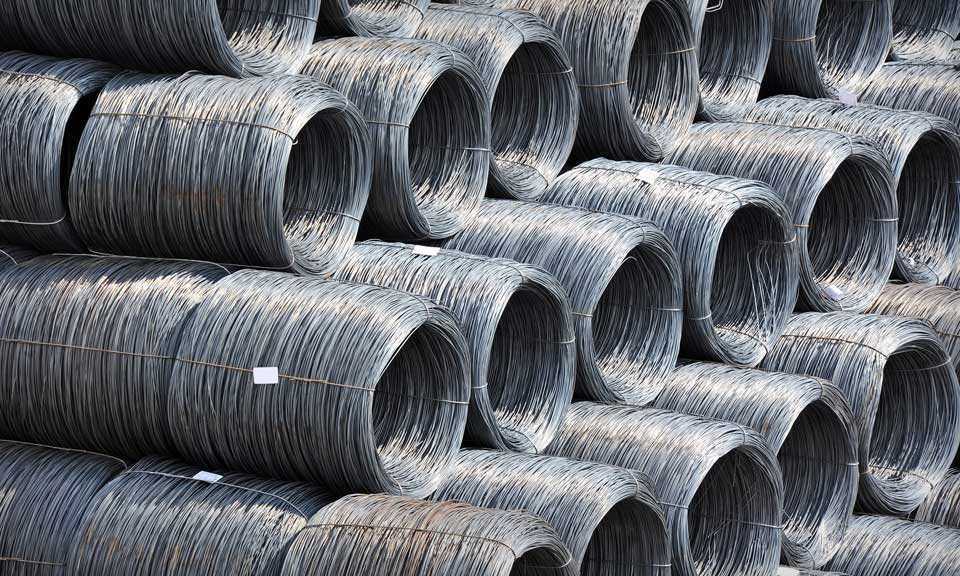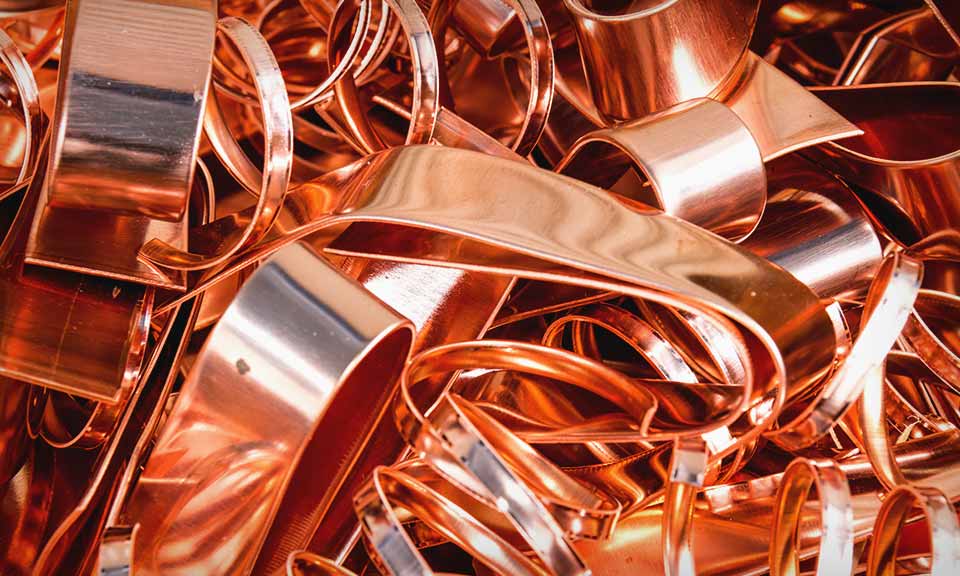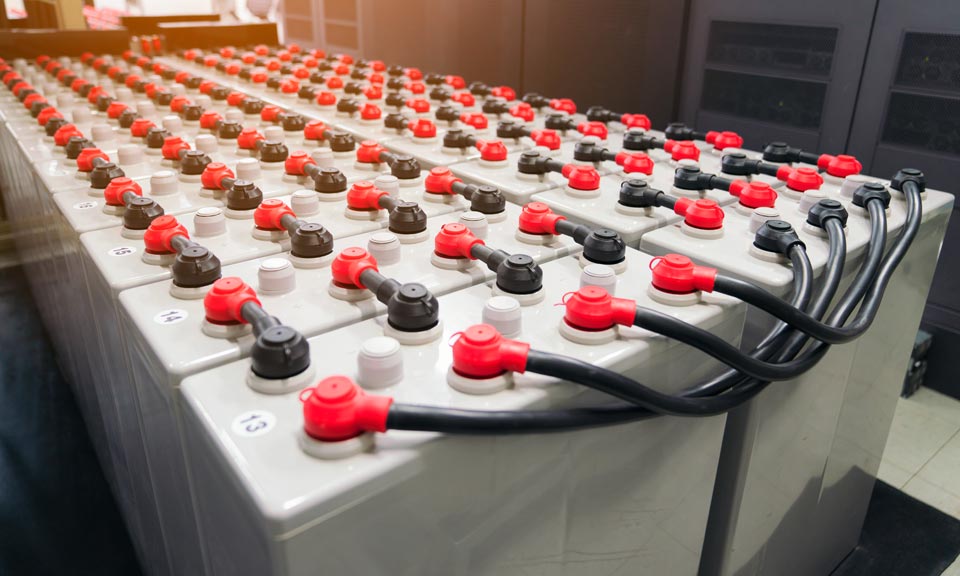MET COAL SERIES: Metallurgical coal's gradual change of guard in spot market influence

This five-part story series examines the coking coal market from a few angles. This first part focuses on pricing evolution and spot liquidity. The second analyzes how trade flows have changed, the third traces the rising importance of environment, social and governance criteria, while the fourth takes a deep dive into the workings of coal trading platforms that may inform spot price assessments. The final part examines the current state of the spot market and explores directions for future evolution.
Shifts in the way a commodity is priced often result from major economic and world events and coking coal is no exception, having witnessed the pricing mechanism for long-term contracts move from annual negotiations toward spot-linked pricing over 2010-2012 as spot prices crashed due to a sovereign debt crisis in Europe, a shaky US recovery from the 2008 global financial crisis and China's sagging under the weight of ballooning domestic steel capacity.
While earlier annual benchmark negotiations were led mainly by major steelmakers in Japan and Europe, Chinese steelmakers had an increasing say through their activity in spot markets as growing steel capacity fueled their appetite for coking coal imports.
More than a decade on, the coking coal market has not looked back on its price indexation journey, although a new set of events – the pandemic, China's unofficial ban on Australian coal, erratic weather and the Russia-Ukraine war – may see a change of guard in terms of spot market activity, chiefly by India and Russia.
The path that coking coal embarked on in its indexation journey is a well-trodden one. Not only did iron ore pave the way a couple of years earlier, when then BHP Billiton CEO Marius Kloppers broke away from the annual benchmark system in favor of spot pricing – many other commodity markets effectively already had some form of floating price mechanism in place based on published price indices, including assessments published by Platts, part of S&P Global Commodity Insights.
While vestiges remain, as in the case of some semi-soft coal and pulverized coal injection contracts which are set via quarterly negotiated fixed prices in Northeast Asia, the wave of indexation has been inexorable.
The implicit understanding in the coking coal market was that BHP, as the biggest producer of coking coal, would dedicate a portion of output to the spot market to support price discovery, whether via bilateral negotiations or on trading platforms.
This unspoken compact was broadly seen to have served the market well, as long as a steady stream of spot supply flowed and allowed daily supply-demand fundamentals to determine where prices were assessed and published, which when averaged, let buyers and sellers effectively do away with long-drawn price negotiations.
The stage was therefore set, with one of the key conditions in the evolution of any commodity market toward proper price risk management fulfilled. The other key condition is the growth of a corresponding paper market for market participants to hedge their price exposure or speculate on future price directions.
Today, the metallurgical coal market has made inroads in index-linked pricing but is yet to see the derivative market develop to a meaningful size for efficient hedging and speculation.
Market participants see the low liquidity in the derivative market as a barrier to entry, although a chicken-and-egg problem presents in that some cite the low liquidity as precisely the reason why they are not entering the paper market.
Before China's unofficial ban on Australian coal imports in October 2020, it was the biggest spot buyer of seaborne metallurgical coal.
Leaning on rich domestic coal resources, Chinese buyers often tapped imports of seaborne coals opportunistically, especially premium brands with high coke strength after reaction and low volatile matter that served the needs of the ever-growing sizes of their blast furnaces, especially in coastal regions.
Chinese buyers were often seen as price leaders by buyers in the rest of the world, and deals, bids and offers they were involved in informed Platts CFR China assessments. Often, but not automatically, such information also informed Platts assessments on an FOB Australia basis via a freight netback, when it was determined that China was the marginal buyer of coals traded on this incoterm.
Not everyone, however, was thrilled with the idea of the Chinese market setting prices for the rest of the Asia-Pacific and even as far afield as Europe, where buying practices differed drastically.
Steelmakers in these so-called traditional markets operate mostly older coke- and iron-making facilities that limit flexibility in coal blending, and so prefer to lock in nearly all their requirements via term contracts to ensure security of supply.
Following China's unofficial ban on Australian coal imports, two key changes occurred. The first was the decoupling of the relationship between FOB Australia and CFR China prices.
The spread between Platts Premium Low Vol Hard Coking Coal CFR China and FOB Australia prices in 2019 averaged at $9.31/mt, according to S&P Global calculations.
This was very close to the average of Platts dry bulk freight assessments for metallurgical coal for the East Coast Australia-Northern China route over the same year, at $9.45/mt, indicating how closely related prices on both locational bases are.
But from November 2020 onwards, the CFR-FOB spread has widened in both directions, surging to a high of $218/mt in October 2021 after major rains flooded coal mines in the key province of Shanxi, and then plunging to minus $245/mt in March 2022 after the EU threatened to sanction Russian coal.
The market has not been a stranger to this phenomenon, as seen when Cyclone Debbie hit in 2017, which saw FOB Australia prices surge far above CFR China price levels.
The second major change was the sharp drop in spot liquidity observed, as steelmakers in other major importing economies like Europe, India and other parts of Northeast Asia willingly took up the coal that the Chinese gave up, not surprisingly, mainly via term contracts.
Spot transactions for premium hard coking coals on a CFR China basis observed by Platts slumped to just 4.12 million mt in 2021 from 27.32 million mt the previous year, and dropped further to 0.73 million mt in 2022, data compiled by Platts showed.
As a percentage of total output by BHP Mitsubishi Alliance (BMA), the world's top producer, Platts-observed spot deals of premium hard coking coals were at 19% in 2020, slipped to 13% the following year and then tumbled to just 6% in 2022.
In the first three months of 2023, observed spot deals accounted for 6% of BMA's production, indicating little change in the trend of thinning spot liquidity.
BHP, which markets all the coal produced by the joint venture, did not respond to an e-mailed request for comment.
The increased allocation of material to term contracts compounded a situation of reduced spot availability in 2022, when planned EU sanctions on Russian coal, inclement weather in Queensland that curtailed output and COVID-19-related labor shortages drove spot prices to a record high of $670.50/mt FOB Australia in March.
Even though term contracts ensured security of supply, spot-linked pricing meant that any tightness in spot material reverberated and was magnified in the price of term contractual volumes.
Steelmakers in India, having undergone consolidations and all executing ambitious capacity expansions, comprised a key market segment that actively boosted term contractual purchasing, mainly due to a lack of domestic resources.
Leapfrogging China as the top importer of seaborne coking coal last year and being agnostic to Western sanctions on Russian coal and PCI, Indian steelmakers have come into their own and are now playing a more active role in the spot market.
When converting coal to coke did not make economic sense, JSW Steel for example sought to sell coking coal via real-time transparent tenders published by Platts, following a similar move by ArcelorMittal.
Indian buyers have also moved beyond being buyers of mainly mid-tier hard coking coals to become active buyers of premium hard coking coals from Australia and even North America.
What has driven their new-found appetite has been a tectonic shift in seaborne coking coal trade flows that has seen attractively priced Russian mid-tier coals being redirected by the Russia-Ukraine war to willing buyers mainly in India and China.
From a benchmarking perspective, India's emerging activity in the spot market for premium low-vol hard coking coals may see it exert greater influence over corresponding price assessments for that grade of coal, especially as it competes head-to-head with Chinese mills as the marginal buyer of Australian coals.
The next part of the series examines more closely the shifts in these trade flows and their impact.

News
China's property sector has been in shambles over the past few years and remains the biggest drag on domestic steel demand. The property market has trended downwards in the first quarter of 2024. With no major recovery signs in new home sales, China’s new home construction starts are likely to remain on the downwards trajectory in the foreseeable future. The slowing property sector has triggered debt risks locally, leading Beijing to order local governments to downsize infrastructure projects, which has also undermined the growth momentum in infrastructure steel needs, adding to the demand slump. Click here to see full-size image

News
Plant will have an output of 80,000 mt/year Syrah delivered 10,000 mt of graphite fines to PT Indonesia BTR Chinese graphite exports "extremely limited" over Jan-Feb Chinese anode material producer BTR New Material Group is expected to start up an 80,000-mt/year active anode materials plant at Indonesia's Morowali Industrial Park, Central Sulawesi province, by the end of 2024, Australia-listed graphite producer Syrah Resources said April 8. The $478 million AAM plant will process synthetic graphite, supplied by Syrah and other suppliers, into anode materials. At the same time, Australia's Evolution Energy Minerals, in which BTR owns a 9.9% stake, is expected to supply 100% of the fine flake graphite produced from its Chilalo project in Tanzania to BTR for three years. Syrah said on the same date that it delivered a 10,000-mt break bulk shipment of natural graphite fines from its Balama graphite operation in Mozambique to PT Indonesia BTR New Energy Materials in Indonesia. The future of Syrah's Balama operation, which has a production capacity of about 350,000 mt/year, will be determined by the impact of China's export controls on the global market. China implemented export controls on natural graphite and its products, effective Dec. 1, 2023 . Citing January-February data from China's General Administration of Customs, "natural graphite fines and coarse flake exports were extremely limited," Syrah said. "Purified spherical graphite exports were 25%-40% of the 2023 monthly average and limited to South Korea." The 10,000-mt cargo to BTR is Syrah's "first large volume natural graphite sale to a battery supply chain participant destination outside China," Syrah said, following a trial shipment made in the first quarter of 2024. The delivery of the graphite cargo to Indonesia comes after Syrah signed a six-year deal to supply natural graphite fines to South Korea's Posco Future M in March . Data from S&P Global Commodity Insights showed that Platts assessed spot prices of natural flake graphite at $465/mt CIF Northeast Asia on April 5, flat from the session before, and spherical graphite at $2,060/mt CIF Northeast Asia, also unchanged from the previous session. Platts Connect: News & Insights (spglobal.com)

News
More processing of CAM, battery precursors for qualification with OEMs Center to focus on reducing CAPEX, OPEX; improving metal recovery rates Company to implement processes at commercial scale at planned Teesside recycling hub UK-based clean technology company Altilium has completed the expansion of its cathode active materials and EV battery recycling innovation center in Plymouth, it said April 5. The site has been expanded from 10,000 sq ft to 18,000 sq ft with the staff headcount increased to 70, it said in a statement. Without disclosing specific volumes, the company said the expansion would allow it to process larger volumes of CAM and battery precursors for qualification with OEM’s and battery cell manufacturers. Work completed on the facility includes a major electrical upgrade required to power the recycling facility, start-up EV battery recycling test bed and equipment procurement. Altilium said the innovation center, known as Act 2, would focus on reducing CAPEX and OPEX of future plants and improving the rates of metal recovery, particularly for lithium. The company plans to implement these processes at its planned Teesside recycling hub (Act 4). Announced in November, the Teesside facility, designed by engineering consultancy Hatch, will have the capacity to process approximately 50,000 mt/year of black mass. When batteries are manufactured or reach their end of life, production offcuts or used batteries can be collected, dismantled and shredded to produce black mass, from which critical metals including lithium, nickel, cobalt and manganese can be extracted. The plant will comprise two processing facilities: a chemical plant producing 95,000 mt/year of battery precursors including lithium carbonate and nickel sulfate, and a cathode active material plant producing 30,000 mt/year of CAM. The company said the facility, once fully operational, will meet around 20% of the UK’s CAM requirements. The recycling of black mass has become increasingly important as a supplement to virgin material supply, as well as to reduce the carbon footprint in the battery supply chain. In addition to its Teesside battery recycling plant, Altilium is also retrofitting its existing SX-EW hydrometallurgy plant in Bulgaria to produce battery intermediates MHP and lithium sulfate. The plant is being upgraded to process up to 8,000 mt/year of black mass, with commercial operations expected to start this year. On Feb. 22, SQM Lithium Ventures said is had increased its investment in Altilium by $9.43 million, bringing its total contribution to $12 million. The funding, done through SQM's investment arm SQM Capital Ventures, was part of the Series A financing round. Altilium’s Series B financing, which will focus exclusively on the Teesside project, is expected to launch during 2024, with the plant itself expected to take around 36 months to construct. Platts, part of S&P Global Commodity Insights, assessed cobalt payables for Ni-Co black mass ex-works Europe at 52% basis European cobalt metal 99.8% April 2, down 3 percentage points on the day and on the week. Platts assessed nickel payables at 52% basis LME nickel April 2, also down 3 percentage points on the day and on the week. Platts Connect: News & Insights (spglobal.com)

News
To build on EU's Critical Raw Materials Package Support, accelerate implementation of sustainable critical minerals projects The EU, US and other countries in the Minerals Security Partnership (MSP) have launched the MSP Forum to expand cooperation on critical raw materials required for the global green and digital transitions, the European Commission said in an April 5 statement. The MSP partners were joined by Kazakhstan, Namibia, Ukraine and Uzbekistan to launch the platform, it said, which will be co-led by the US and the EU. The EC added that the recently announced Critical Raw Materials Club would become a full part of the MSP Forum, bringing together resource-rich countries and countries with high demand for the resources. “This will create a greater, more ambitious joint initiative linked to the Minerals Security Partnership, where the European Commission represents the EU,” it said. The MSP Forum aims to build on the EU's Critical Raw Materials Package adopted in March 2023 and will form a project group to support and accelerate the implementation of sustainable critical minerals projects, the EC said. The forum will also create a policy dialogue to identify policies for boosting sustainable production and local capacities, facilitate regulatory cooperation to foster fair competition, transparency and predictability and promote high environmental, social and governance standards in critical raw material supply chains, the EC said. “The MSP Forum is a cornerstone of the EU’s strategy to secure a more sustainable supply of critical raw materials,” EC Executive Vice-President and Commissioner for Trade Valdis Dombrovskis said, adding that it would be key to reducing vulnerabilities and achieving the green and digital transition in Europe and globally. “With this global initiative, we want to make sure that international cooperation is up to the task of increasing investment, diversifying supply chains and bringing sustainable benefits to all parties,” he said. Critical raw materials are needed for numerous technologies in the energy transition, resulting in high demand, although supply is hindered by geopolitical, environmental and social risks and challenges. The EC estimates that EU demand for lithium used in electric vehicle batteries and energy storage will increase twelve-fold by 2030. Platts, part of S&P Global Commodity Insights, put both battery grade lithium carbonate and hydroxide assessments at $14,500/mt CIF Europe on April 4, both stable on the day and on the week, and down from $15,800/mt on Jan. 2. The EC said any partners that were ready to commit to the key MSP principles would be allowed to join the MSP Forum, noting that these principles included diversification of global supply chains and high environmental standards, good governance and fair working conditions. The co-leaders and current MSP partners plan to reach out to prospective members in North and South America, Africa, Asia and Europe to expand the Forum’s participation and start working within the project and policy dialogue groups. Besides the EU and US, the current MSP partners are Australia, Canada, Estonia, Finland, France, Germany, India, Italy, Japan, Norway, South Korea, Sweden and the UK. EU, Uzbekistan sign MOU In a separate statement, the EC announced that the EU and Uzbekistan had signed a memorandum of understanding to launch a strategic partnership on critical raw materials, which it said “underscored the partners' shared commitment to enhance cooperation in the field of critical raw material.” Under the partnership, the EU and Uzbekistan will work on establishing an operational roadmap with concrete implementation actions, the EC said. The partnership will focus on cooperating on the integration of sustainable value chains, increasing the resilience of supply chains and enhancing the transparency of measures related to investments, operations and exports. It will also focus on the mobilization of funding for projects resulting from the partnership and the development of infrastructure required for the development of value chains, as well as on cooperation to achieve sustainable and responsible production and sourcing of critical raw material, on research and innovation, and on building capacity to enforce relevant rules and on developing training and skills. Platts Connect: News & Insights (spglobal.com)